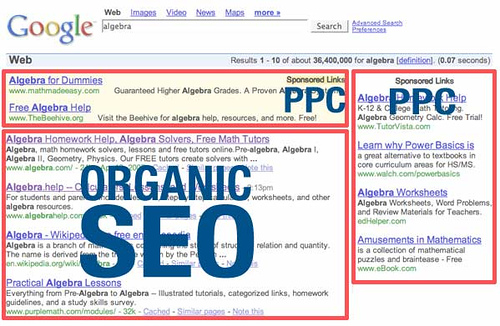SEO, what is it? and how does it work? How does SEM work into the whole situation?
How Do Search Engines Work
First, we need to know how search engines work. Search engines use crawlers and spiders to search all over the internet for us. It crawls and indexes the billions of documents, pages, files, news, videos, and media on the web. Once they find these site they use codes to decipher these pages then store selected pieces that can be recalled later during a search query.
Search Engines also provide answers. However, it only provides relevant and importance answers. How does a search engine decide relevance though? Does finding the right words do it? No, there are hundreds of influences ones results when doing a search. Importance can be determined though by popularity. Why popularity? When a site is popular a search engine the more valuable the information contained within that site. This practice seems to have worked well.
Does all this make sense? No. Well, I have found a little video for you that may help explain things, such as spiders or what search engines actually do.
Now if that didn’t help, you can also check out this video which puts things about search engines little differently.
How does a search work?
- Experience the need for an answer, solution or piece of information.
- Formulate that need in a string of words and phrases, also know as “the query.”
- Enter query into search engine.
- Browse through results for a match.
- Click on result.
- Scan for a solution, or a link to that solution.
- If unsatisfied return to the search results and browse for another link or…
- Perform a new search with refinements to the query.
Ranking Better
There are two major search engines that people are using: Google and Bing. Each gives us a few tips on how to rank better.
What does Google recommend?
- Make pages for users, not for search engines. Don’t display one thing to search engines and other things to your users.
- Make a site with clear hierarchy and text links. Every page should be reachable from at elast one static text link.
- Create useful, information-rich site, and write pages that clearly and accurately describe your content.
- Use keywords to create descriptive, human friendly URL’s.
What does Bing recommend?
- Ensure a clean, keyword rich URL structure is in place.
- Make sure content is not buried inside rich media and verify that rich media doesn’t hide links to crawlers.
- Create keyword-rich content based on research to match what users are searching for. Produce fresh content regularly.
- Don’t put the text that you want indexed images.
Are you ready for a bit of information overload? Yes, well Google put together a white sheet that tells us way more.
What is SEO?
Honestly, I don’t think I could say this better. So, I’m letting BlueHost take it away.
SEM – Search Engine Marketing
Search engine marketing starts when one starts the search. Since someone has already started to search for an item, this typically means someone is already in the buying process. This allows for marketers to fill those needs. Search has become one of the best sources in traffic. This traffic isn’t just paid ads either, it can also be organic searches also.
According to SEMPO, search engine traffic is unique in the following ways:
- Search engine traffic is a non-intrusive method of Internet marketing. The majority of online and offline advertising intrudes on the audience, interrupting their activities. Search is unique in tapping a searcher at the exact moment they are seeking knowledge or a solution. Searchers are on a mission – it’s “just-in-time marketing”.
- Search engine traffic originates from a voluntary, audience-driven search. This means the visitors from a search results link have not only selected your listing from among your peers, but chose the search query that resulted in your listing being shown.
- Search engine traffic results from a fixed inventory of searches. To truly qualify as search engine traffic (or pure search traffic), the search must be one that the searcher initiated as a search, either by clicking a search link in a directory style portal or by filling out a search query box.
What are some of the ways we can use SEM?
Search engine marketing (SEM) is typically used as a broad term for all forms of search marketing.On the other hand it can be used as the term for only paid ads. Here we are using SEM as the term as the broad term. There are two types of SEM:
- PPC (Pay-Per-Click)
- Organic

Photo: Web It Now – http://www.online-marketing.gr/search-engine-marketing-sem.html
As you can see in the image above, on Google, the organic traffic and the PPC is separated distinctly. This is extremely important to know the benefits and downfalls of each of these types of SEM.
PPC Benefit: You get to be on the 1st page of Google.
PPC Downfall: Since this is a bidding war, it can be expensive.
Organic Benefit: It is free and based on the algorithms.
Organic Downfall: If your site is newer, it can take a long time before you are able to be on the 1st page.
How does SEM work with Inbound Marketing
Sources:
MOZ: The Beginners Guide to SEO
YouTube Video: How Do Search Engines Work
YouTube: BlueHost – What is SEO?


One thought on “Calling All Those Searching – SEM”